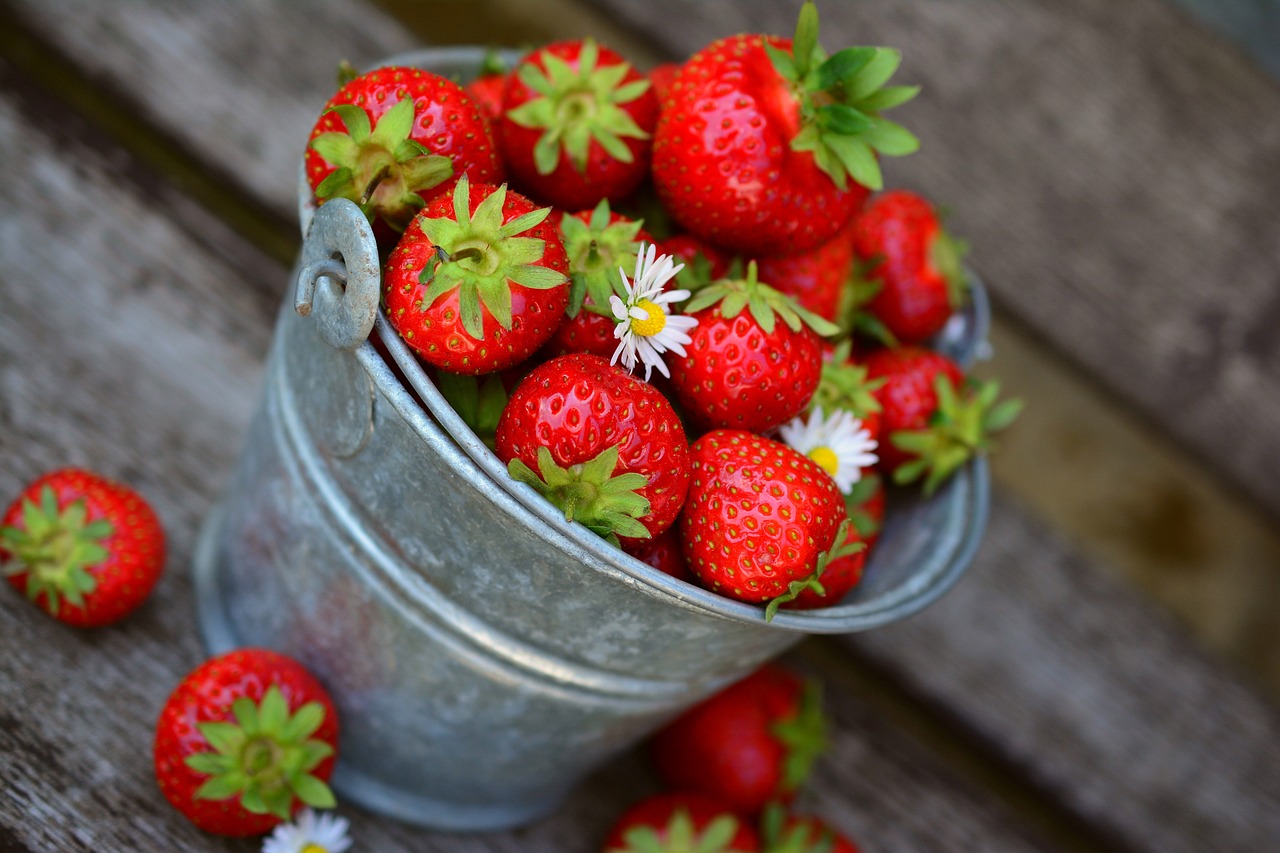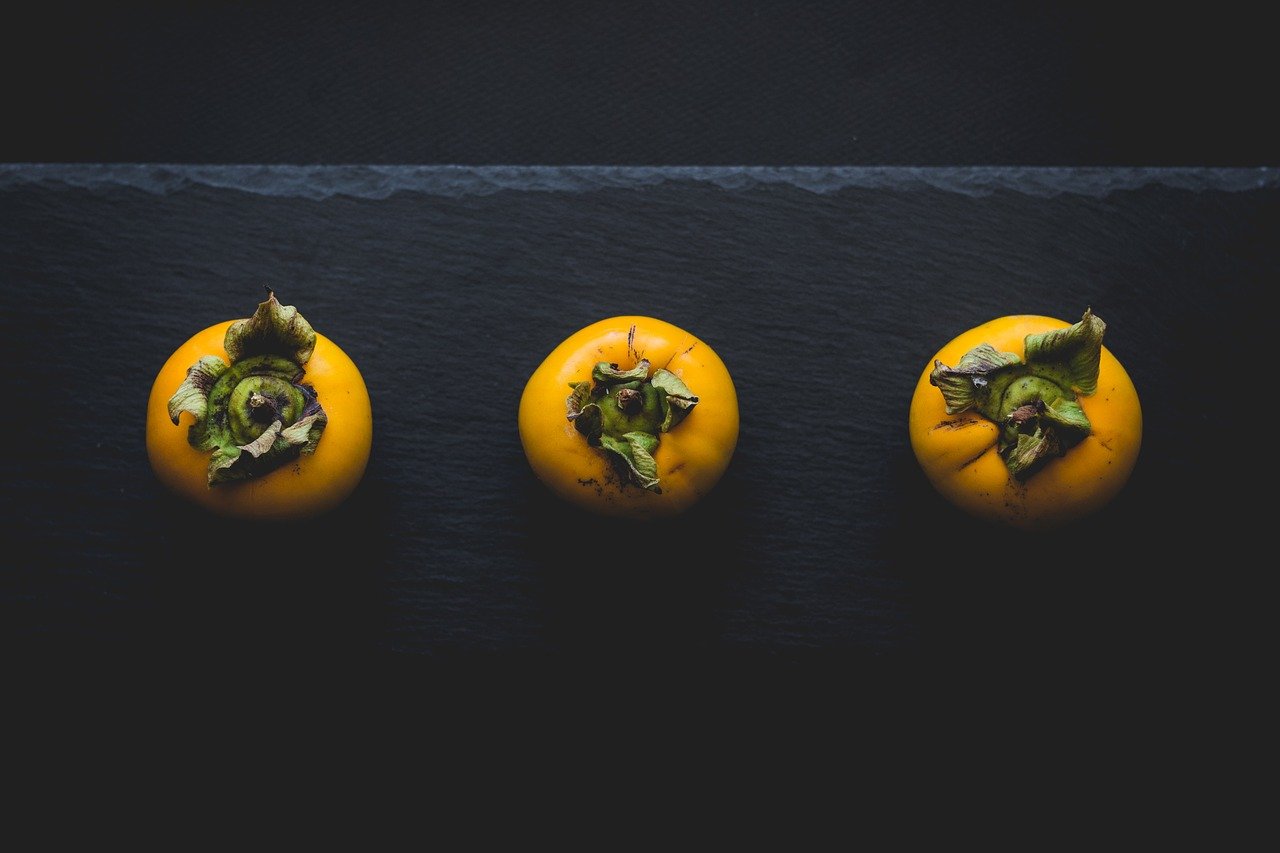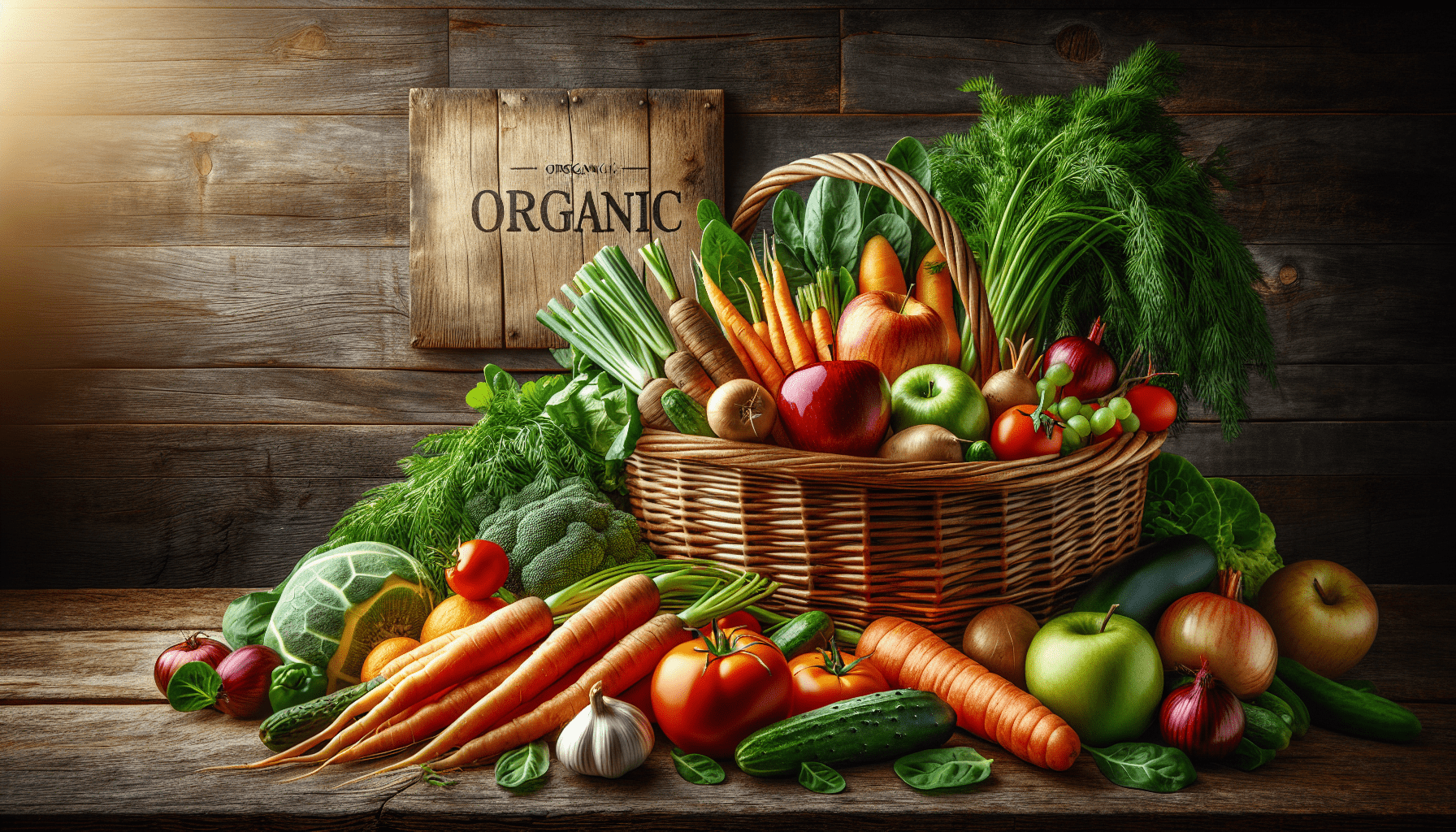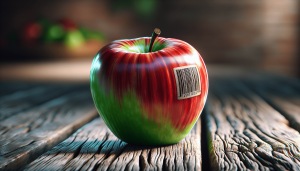Understanding What Is Organic Food
In our journey to make healthier food choices, we often come across the term “organic,” but what does it truly mean? In this article, we explore the essence of organic food, breaking down its agricultural origins, the certification process, and the benefits it brings to our tables and the environment. By grasping the fundamentals of organic farming, we can better appreciate the quality and care that goes into producing these nourishing foods that align with our values and support sustainable practices. Have you ever wondered what makes food “organic” and why it’s becoming increasingly popular? We’ve all heard about it, seen the labels in the supermarket, and maybe even tasted the difference, but what really sets organic food apart? Let’s dive in and explore what organic food truly means, how it benefits us and our environment, and why it might be worth the extra few bucks.

What is Organic Food?
Organic food is more than just a label; it’s a way of growing, processing, and handling food while adhering to certain standards and practices that promote sustainability and health. But what specifically defines organic food?
Defining Organic
When we talk about organic food, we are referring to how the food is grown and processed. Organic farming practices are designed to meet the following goals:
- Enhance soil and water quality
- Reduce pollution
- Provide safe and healthy livestock habitats
- Enable natural livestock behavior
- Promote a self-sustaining cycle of resources on a farm
Organic Farming Principles
Organic farming eschews synthetic chemicals such as herbicides and pesticides, synthetic fertilizers, genetically modified organisms (GMOs), antibiotics, and growth hormones. Instead, it relies on natural substances and physical, mechanical, or biologically based farming methods.
Some common organic practices include:
- Crop rotation to manage soil fertility and pests
- Green manure and composting to feed the soil
- Biological pest control methods to manage insects and diseases
- Livestock raised on organic feed without the routine use of antibiotics or hormones
The Benefits of Organic Food
Choosing organic isn’t just about avoiding pesticides and GMOs. There are numerous benefits to both our health and the environment.
Health Benefits
Many of us opt for organic food for its potential health benefits. Here’s why:
- Fewer Pesticides and Additives: Since organic farming prohibits the use of synthetic pesticides and additives, organically grown foods tend to have lower levels of these residues.
- Nutrient Density: Some studies suggest that organic foods may have higher levels of certain nutrients, such as antioxidants, than their conventionally grown counterparts. For example, organic crops often have higher vitamin levels.
- Avoid GMOs: Organic products are GMO-free by definition. For those concerned about the potential long-term health impacts of GMOs, organic offers a safe haven.
Environmental Benefits
Organic farming practices also bring tremendous benefits to our environment:
- Soil Health: Organic farming practices enhance soil structure and health. The use of compost, animal manure, and crop rotations builds fertile soil and promotes efficient use of water.
- Biodiversity: Organic farms typically have greater biodiversity. This means a variety of plants, insects, and animals, which can create a healthier ecosystem.
- Reduced Pollution: By avoiding synthetic chemicals and fertilizers, organic farming reduces the runoff into water systems, which helps protect our natural waterways from contamination.
- Climate Change Mitigation: Organic farming practices can help combat climate change by storing more carbon in the soil and using less energy.
The Organic Certification Process
So, how does a farmer ensure their product is organic? This is where organic certification comes in. To label food as organic, farmers and producers need to meet specific requirements and undergo rigorous inspections.
Certification Standards
Countries have their own certification bodies and standards. For instance, in the United States, the USDA’s National Organic Program (NOP) oversees organic certification. Key requirements include:
- No GMOs
- Crop rotation and soil management practices that promote soil health
- Only approved pest control methods
- Organic feed and access to the outdoors for livestock
- Prohibition of synthetic fertilizers and pesticides
How Certification Works
Steps in the Certification Process:
| Step | Description |
|---|---|
| 1. Application | Farmers or producers apply to a certification body, providing their farm plan and practices. |
| 2. Inspection | A certifying agent conducts a thorough on-site inspection to verify compliance with organic standards. |
| 3. Review | The certifying agent reviews the inspection report and either grants certification or suggests changes. |
| 4. Certification | If approved, the producer receives the organic certification and can label their products as organic. |
| 5. Annual Inspection | Certification isn’t a one-time event. Annual inspections ensure ongoing compliance. |
It’s a meticulous process to ensure that what ends up on our table is genuinely organic.
Types of Organic Labels
When we see the word “organic” on a product, it can signify different standards. Understanding these labels can help us make informed purchasing choices.
100% Organic
Foods labeled “100% organic” must contain only organically produced ingredients and processing aids (excluding water and salt). These products have passed the highest level of organic certification.
Organic
When something is labeled simply “organic,” it means that at least 95% of the ingredients are organically produced, with the remaining 5% being non-organic substances approved for use according to strict standards.
Made with Organic Ingredients
This label is used for products that contain at least 70% organically produced ingredients. The remaining 30% of non-organic ingredients must still adhere to certain restrictions and cannot include GMOs.
Organic Ingredients Listed
Products with less than 70% organic ingredients can list the organic items on the ingredient panel, but they cannot use the “organic” label on the front packaging.

Price of Organic Food
One common concern about organic food is the price. Organic products often cost more than their conventional counterparts. Let’s break down why this is the case and whether it’s worth the investment.
Why Is Organic Food More Expensive?
Several factors contribute to the higher cost of organic food:
- Labor-Intensive Practices: Organic farming requires more hands-on labor, such as manual weeding, crop rotation, and compost application.
- Certification Costs: Achieving and maintaining organic certification involves considerable expense for farmers, from application fees to annual inspections.
- Lower Yields: Organic farming might result in lower yields compared to conventional farming methods, making each unit of production more costly.
- Scale of Production: Many organic farms are smaller than conventional farms, and economies of scale are not as easily achieved.
Is It Worth It?
Deciding whether to pay the premium for organic food is a personal choice that involves balancing budgetary constraints with health and environmental ethics. For some, the peace of mind and potential health benefits justify the higher cost. For others, prioritizing organic choices for certain high-risk foods, like those on the Environmental Working Group’s Dirty Dozen list, might make the most sense.
Common Organic Foods
While almost any food can be grown and produced organically, some foods are more commonly found in organic varieties. Let’s look at some of the most popular organic foods and why they might be good candidates for your next grocery run.
Fruits and Vegetables
Organic fruits and vegetables are widely favored due to their minimal pesticide exposure. Popular organic choices often include apples, strawberries, spinach, and tomatoes.
Dairy
Organic dairy products come from animals raised according to organic standards, meaning they are fed organic, non-GMO feed and are not given antibiotics or growth hormones.
Meat and Poultry
Organic meat and poultry come from animals that have been raised organically and given access to the outdoors. They are also fed organic feed and are not treated with antibiotics or hormones.
Packaged Foods
From cereals to snacks, a variety of packaged foods are available in organic forms. These products typically contain organic ingredients and meet the required standards for certification.
Grains and Legumes
Organic grains and legumes, such as quinoa, oats, and beans, are another staple in the organic aisle.

Cooking with Organic Ingredients
So, you’ve decided to give organic food a try. What next? Here are some tips to get the most out of your organic ingredients and incorporate them into delicious and healthy meals.
Tips for Cooking
- Freshness: Organic produce tends to spoil faster due to the lack of preservatives. Buy in smaller quantities and consume them while fresh.
- Simple Recipes: Organic ingredients often have more robust flavors, so simple recipes that let the ingredients shine can be incredibly satisfying.
- Storage: Proper storage is key. For example, leafy greens should be kept in a breathable bag in the crisper drawer, while root vegetables can often be stored in a cool, dark place.
- Meal Prep: Organic food may come in smaller quantities. Consider meal prepping to make efficient use of your groceries and reduce waste.
Recipe Ideas
Here are a couple of simple, organic-friendly recipes to get you started:
Organic Kale and Quinoa Salad
- Ingredients: Organic kale, cooked quinoa, cherry tomatoes, cucumbers, red onion, lemon, olive oil, salt, and pepper.
- Instructions:
- Chop the kale and massage with olive oil and lemon juice until tender.
- Mix in cooked quinoa, cherry tomatoes, chopped cucumbers, and thinly sliced red onion.
- Season with salt and pepper to taste.
Organic Chicken Stir-Fry
- Ingredients: Organic chicken breasts, broccoli, bell peppers, carrots, soy sauce, garlic, ginger, honey, and olive oil.
- Instructions:
- Slice the chicken and veggies into bite-sized pieces.
- Stir-fry the chicken in olive oil until browned and cooked through.
- Add the vegetables and stir-fry until tender-crisp.
- Mix soy sauce, minced garlic, grated ginger, and a bit of honey; pour over the stir-fry and cook for another minute.
The Future of Organic Food
As awareness about the benefits of organic food grows, so does the market. What does the future hold for organic food, and how might it shape the way we eat?
Trends and Innovations
Organic food is evolving rapidly, with some exciting trends and innovations on the horizon:
- Technology in Organic Farming: From drones for crop monitoring to AI and robotics for pest control, technology is being leveraged to enhance organic farming efficiency and sustainability.
- Urban Organic Farming: As urban populations grow, so does the interest in urban organic farming. Rooftop gardens, community gardens, and organic urban farms are popping up, making organic food more accessible.
- Organic Products Beyond Food: The organic market is expanding beyond food to include organic textiles, beauty products, and even household goods.
Challenges
Despite its growth, the organic sector faces several challenges:
- Cost and Accessibility: Making organic food affordable and accessible to a broader population is a significant challenge.
- Standards Uniformity: Varied standards across different countries can make international trade in organic products complex.
- Scalability: Scaling organic farming to meet global food demands without compromising quality and sustainability remains an ongoing challenge.

Conclusion
Organic food is more than a passing trend; it’s a movement toward more sustainable and health-conscious eating. From understanding the basic principles and benefits to navigating certifications and cooking delicious meals, we’ve covered everything you need to make informed choices about organic food.
As we continue to learn and innovate, the future of organic food looks promising. Whether we choose to go fully organic or selectively integrate organic products into our diets, every step towards more conscious consumption can make a difference for our health and the planet.
So next time we find ourselves in the grocery store, let’s take a moment to consider what organic means and how it fits into our lifestyle. After all, a little knowledge goes a long way in making better choices for us and our world.



